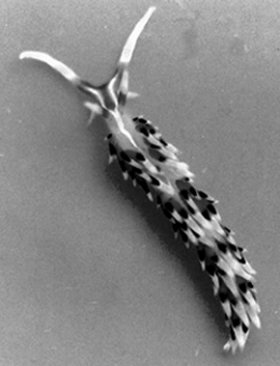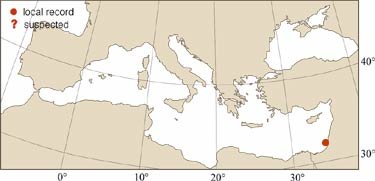
|
Relevant Synonyms
Misidentification
|
|
| photo: G. Gat |
|
SHORT
DESCRIPTION
color :
body color translucent orange with a paler foot, almost white. Head orange with two white streaks running forward from the base of each rhinophore. Cerata, rhinophores and oral tentacles with vivid colors. Cerata banded with deep red, orange, blue, yellow, and white. Oral tentacles orange basally, yellow in the middle, with a white distal part. Rhinophores with an orange basal region, followed by a short white band and yellow tip. Tail and foot tentacles yellow-tipped.
common size :
up to 50 mm in length, usually between 20 and 30 mm. The Mediterranean specimens measured 13 and 15 mm. |
DISTINGUISHING CHARACTERISTICS
BIOLOGY / ECOLOGY
habitat :
relatively shallow reef, down to 15 m deep, and rock pools. |
|
1st
Mediterranean record
|

|
|
DISTRIBUTION
|
ESTABLISHMENT SUCCESS
speculated reasons for success :
|
|
|
MODE OF
INTRODUCTION |
IMPORTANCE TO
HUMANS |
|
KEY
REFERENCES
|
|
|
 Learchis indica Bergh, 1896
Learchis indica Bergh, 1896